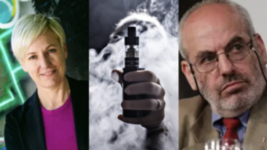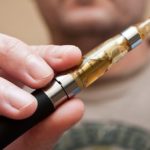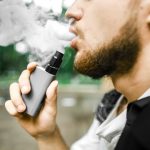It’s Time to Reform Vaping Laws Through a “Harm Reduction Lens”

Right now, in NSW, an adult can buy some cigarettes at a shop and puff away to their ailing heart’s content. But if they’d prefer legal nicotine vaping liquid, a much healthier alternative, they need to obtain a doctor’s prescription.
Yet, if that same individual wants to purchase an imported nicotine vaping product, they can readily do so at a store, illegally from under the counter, with no guaranteed quality control. Indeed, under 18-year-olds can more easily obtain nicotine vapes, than the legal ones that don’t contain the drug.
So, somewhere along the way, during the decade-long vaping debate in this country, the authorities have lost sight of the harm reduction benefits of nicotine vaping compared to smoking.
This means that for adults, it’s easier to obtain deadly cigarettes, while for children, it’s nicotine vapes that are more readily available.
NSW Greens MLC Cate Faehrmann has put vaping law reform on the agenda, with the clear aims of making the products containing nicotine easily accessible for adults, whilst ensuring that children can’t continue to obtain them from unscrupulous retailers.
And whilst vaping has taken a beating in the media of late, with suggestions that there’s an uptick of teens using the devices, our nation’s leading harm reduction expert makes clear that it’s this smear campaign and the dodgy laws relating to nicotine vapes that are causing the real harm.
Regulate and reduce harm
“The current approach by state and federal governments of restricting nicotine vapes to prescription only, while poorly regulating non-nicotine vape products has totally failed,” Faehrmann told Sydney Criminal Lawyers.
“It has simply resulted in a thriving black market that not only makes access easier for people under 18 but leaves consumers buying black market products with unknown quantities of nicotine and other potentially harmful substances,” she continued.
The NSW Greens health spokesperson stresses the need to approach vaping in this state “through a harm reduction lens”, which would see these products regulated in a similar manner to tobacco, with age restrictions on purchasing nicotine vapes and a prohibition on advertising such products.
Another key element to the NSW Greens vaping reform initiative is that across the counter nicotine vaping products will result in an end to the black market, while legally available vapes will have undergone strict quality controls that limit chemical ingredients and extreme levels of nicotine.
“We also need to urgently regulate vaping to deal with the waste crisis that is being caused by disposable vapes,” said Faehrmann, in addressing an often-overlooked aspect of this issue.
“Our plan would make producers responsible for the end-of-life stage of their products and require retailers to operate ‘vape-waste’ disposal bins.”
Not harmless: less dangerous
“Vaping was developed to help smokers quit the very dangerous habit of smoking, which kills 21,000 Australians a year and 8 million smokers a year worldwide,” said Dr Alex Wodak. “Smoking is still the most important long-term challenge to public health in Australia and internationally.”
“The NSW Greens and Tasmanian Greens have described Australia’s prescription control of vaping nicotine as an abject failure and called for more realistic control,” the director of the Australian Tobacco Harm Reduction Association told SCL.
The doctor further raises other key smoking facts that have been lost in the recent campaign against vapes, which includes that two-thirds of smokers die as a result of it, while, of the estimated 82 million vapers globally, there’s never been “a single death… reported scientifically”.
“Vaping isn’t harmless”, Wodak advises, but “it’s much less dangerous than smoking”. And he points out that while vaping aerosol contains between 100 to 200 chemicals at low concentrations, cigarettes contain around 7,000 such substances at higher levels and are often toxic in their effect.
“The demand for much safer vaping nicotine is high and rising in Australia, despite the difficulty obtaining legal supplies,” he added. “Few doctors provide prescriptions for nicotine. Few chemists dispense nicotine for vaping. And few smokers are prepared to jump through these hoops.”
A brief rundown of vaping laws
The Therapeutic Goods Administration (TGA) placed nicotine vaping products in schedule 4 of the Poisons Standard, making them a prescription only substance since 1 October 2021. And importing such products without a script incurs a $27,500 fine, under section 50 of the Customs Act 1901 (Cth).
Nicotine vapes supplied in Australia are supposed to meet the standards set out in Therapeutic Goods (Standard For Nicotine Vaping Products) (TGO 110) Order 2021 (Cth), and locals who want to manufacture such products in this country must obtain a licence from the TGA.
The NSW government passed vaping laws in 2015. These included amending section 22 of the Public Health (Tobacco) Act 2008 (NSW), so it prohibits the sale of vapes and vaping products to people under 18 years old, and carries an $11,000 fine for individuals and a $55,000 one for corporations.
Wodak outlines that the combination of these laws results in “a booming black market with the equally predictable poor quality of products and indiscriminate supply to young Australians”, whereas regulated and quality-controlled nicotine vapes wouldn’t be sold on the sly to kids.
The NSW Greens aims to regulate nicotine levels, the use of harmful chemicals, require health warnings on packaging, restrict sales to under 18-year-olds, fund education programs for teenagers to prevent the uptake of vaping, and ensure that vaping devices and accessories are recycled.
“We’ll be working with our federal colleagues in the coming months to determine what the best legislative approach is to regulate and reduce the harm from all forms of vaping,” Faehrmann said in relation to the next steps to seeing these laws come to fruition.
Shock of the new
The campaign to reform laws regulating this proven harm reduction approach to giving up smoking has come at the same time as a scare campaign against these devices is being waged in the press, with the claim being that vapes are harming young people.
“Breathing fresh mountain air is always the best option,” said Wodak. “No one, including me, wants to see young people vaping, although most young people who vape started smoking before they started vaping.”
And its due to these circumstances that the veteran harm reduction expert doesn’t consider the availability of vaping is leading young people to turn to smoking, and the evidence also shows that non-smoking teens aren’t turning to long-term vaping.
So, what’s with this recent campaign against vapes all about then? Well, according to the doctor, it’s the same reaction conservatives have responded with when other harm reduction interventions, like needle exchanges, methadone programs and pill testing, have been rolled out.
“The main priority with vaping should be making it easy for older smokers to switch from cigarettes to vaping but reducing uptake by young people is a legitimate concern,” Dr Wodak said in conclusion. “Both aims will be achieved by a well-regulated legal supply system.”







